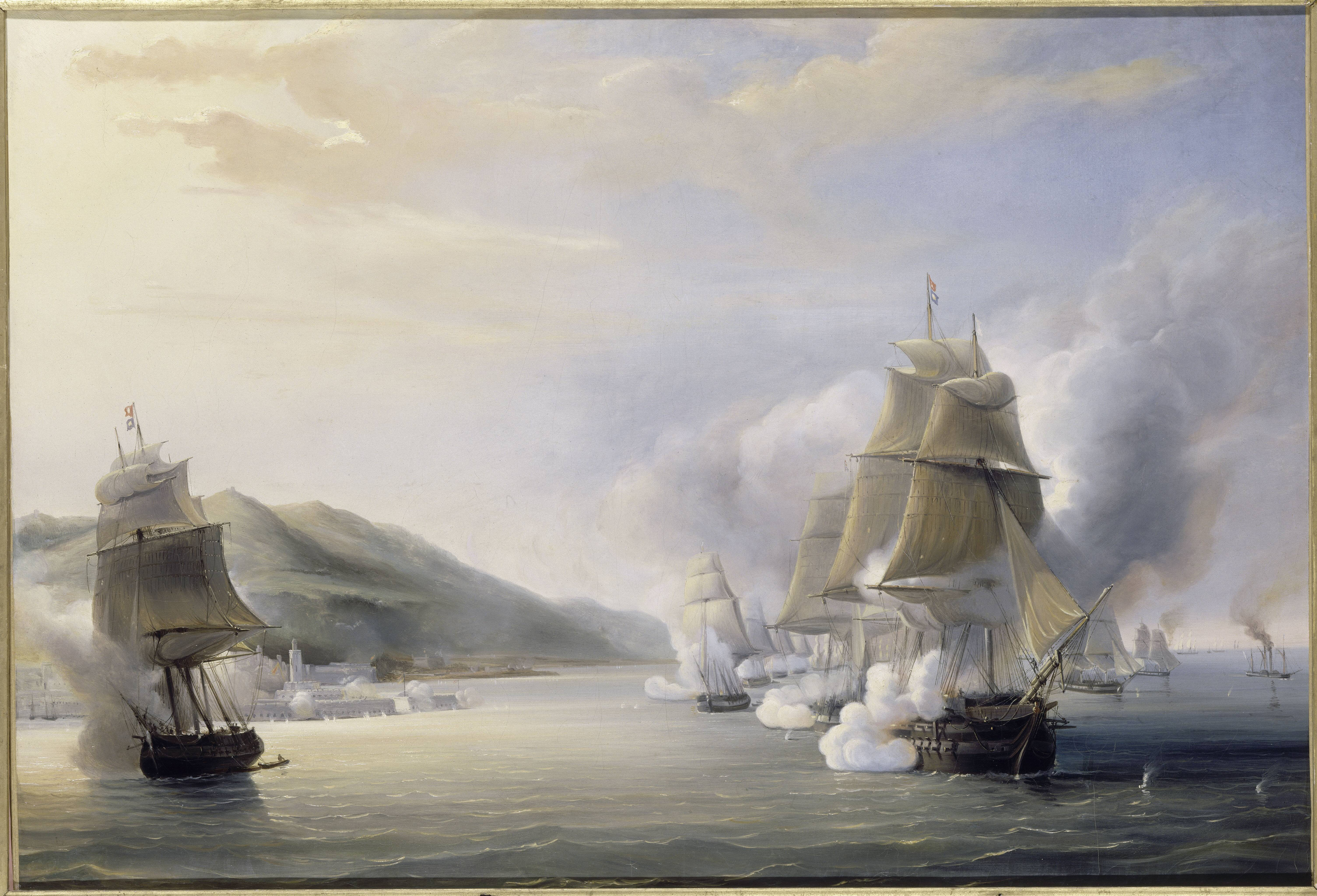Attaque d'Alger par Mer
9:30 PM
Ye Pirate Bold
Dead Men Tell No Tales
Curated by Sonia Larbi
 |
| Antoine Léon Morel-Fatio, Attaque d'Alger par Mer, 1836 |
During the 16th century, as Spanish Moors and Islamic explorers settled into modern-day Algeria and Tunisia, Spain, seeing a chance to expand her borders, started to attack settlements on the coast. Underestimating the naval prowess of the East, Spain found those brave enough fighting back. Enter Aruj and Hizir, two young men from island of Lesbos looking to make a name for themselves. Teaming up with Sephardic Jews fleeing Spain from the looming presence of the Inquisition, the brothers attacked the Spanish ships crossing the Mediterranean carrying gold and trade goods. This turned to be very profitable for the brothers, and Aruj especially proved his bravery many times.
Soon, the pirates turned to the slave trade. They would intercept slave vessels full to the brim with manpower, board the unfortunate ship, kill the captain, and steer the million-dollar cargo to Algiers, the port city they based their operations out of. This made the sultan very happy, and soon their missions changed from slave-hunter to full-on piratical deeds. They could plunder all they wanted on one condition - ten percent of their profit went to the sultan as payment.
Aruj gained notoriety for his deeds on the island of Ischia. He captured 4,000 prisoners and took an additional 9,000 as slaves, which totaled to almost the entirety of the population. As a response to the free-for-all sacking of the towns and cities bordering the Mediterranean, groups of soldiers like the Knights of Malta were formed. The pirates, then assembled in almost a corporate fashion, fought back just as valiantly. Loot was taken by both sides, and then captured back. Slaves were traded back and forth, stolen in the night, or burned alive so the enemy could not profit from them.
As the sultan of Algiers aged, Aruj and Hizir plotted to gain more power. One night, they rallied their crews and any willing man to storm the royal palace and capture the throne. Aruj rose to power and took control of Algiers. He was officially sanctioned by the Ottoman Empire, to whom he promised expanded borders and a share in his profits. Tied to the throne, Aruj ventured little outside his port. He relied on Hizir to fill his coffers and make sure the family name, Barbarossa, did not fade into oblivion.
Attaque d'Alger par Mer is a French painting of a futile attempt by European forces to capture the city of Algiers. Set on a rocky cliff, the entire city is too elevated for a ship's cannons to do any harm. Most of the buildings were made of stone, not wood or brick, which proved impenetrable to gunfire. Additionally, a stone wall lined the outside of the city, making it hard for any invading force to breach the defense. The Constantinople of North Africa, Algiers was a strategic port for the Barbarossa brothers, and an object much sought after by the French, Spanish, and Italian city states. This painting illustrates yet another unsuccessful raid on the city. The ships fire halfheartedly, much too far away to do any serious damage. Less than ten ships even showed up, showing lack of commitment and follow-through by the French. Attacks like these functioned as posturing for the western empires. Their leaders underestimated how such a small group of pirates could inflict so much damage on their bottom-line. Those leaders were wrong.
0 comments